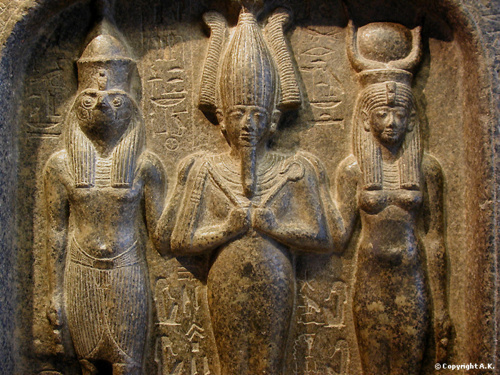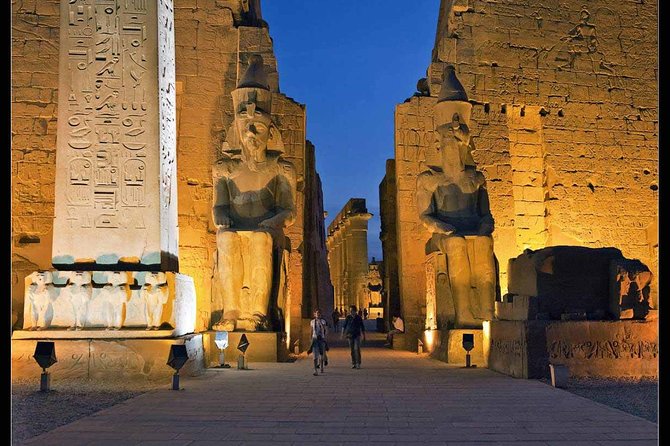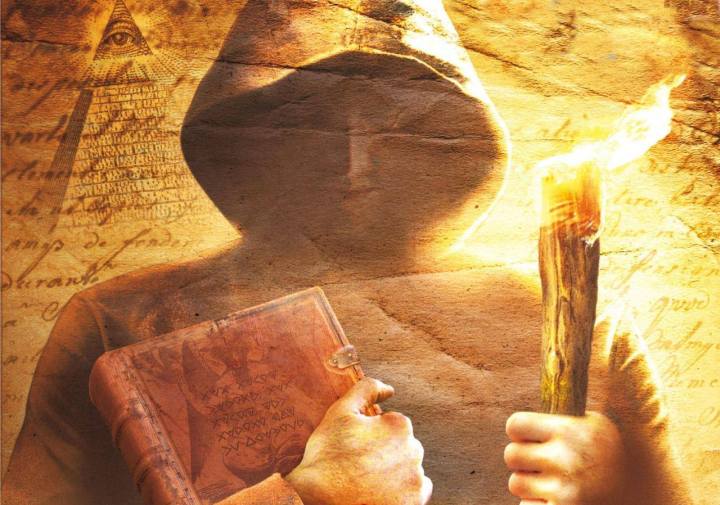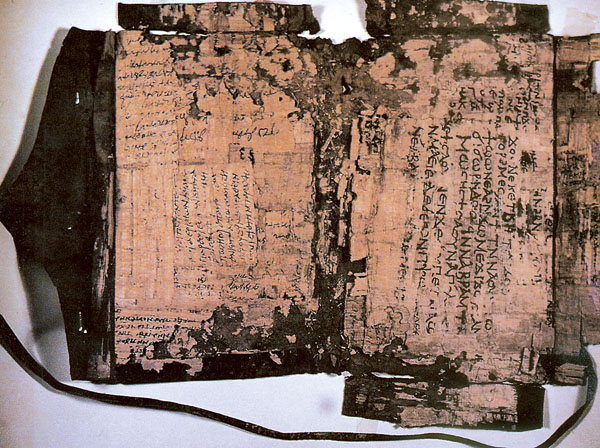The story of Jesus is said to be taken from a man named Heru from Egypt, said to be African and born of a virgin. Heru is supposed to be a story before Jesus. Who is Heru?

Inscribed about 3,500 years ago on the walls of the Temple at Luxor were images of the Annunciation, Immaculate Conception, Birth and Adoration of Horus, with Thoth announcing to the Virgin Isis that she will conceive Horus; with Kneph, the “Holy Ghost,” impregnating the virgin; and with the infant being attended by three kings, or magi, bearing gifts. If one does the necessary study and reads the right sources then beyond any doubt s/he sees that much of the Christian History was pre-extant as African Kemetic Mythology.

Please help keep Afriacan Explorer Magazine running. Consider Donating to one of our Causes
In Egypt Ausar was the man-god who was killed and brought back to life thus giving the world the first notion of “the Resurrection.” Ausar then became the great Judge of the deceased. Auset, Ausar’s wife, was said to have become impregnated by her husband’s spirit while he was dead. She gave birth to a child named Heru in the world’s first “Immaculate Conception.” At his birth a host of deities and wise men were said to have honored him. Some believe the birth of Heru was commemorated on December 25th when the sun was in the zodiacal sign of Capricorn. Capricorn was also known as the Stable of Augeas; so the infant Heru (Sun/Son) was said to have been born in stable. Thus Ausar, Auset and Heru made for the world’s first Holy Trinity.

The story of the resurrected God-King can be found among the Khoi and San peoples of southern Africa as early as 2,000BC. It is only in Africa that the story is this old. Often called, “the mouthpiece of Africa,” Egypt’s location gave it contact with the Near East. Not surprisingly, years later the story of the God-King and his divine son appear in many other cultures. This includes Krishna of India (1200BC), Tammuz of Syria (1160BC), Iao of Nepal (622BC), Quetzalcoatl of Mexico (587BC), Mithra of Persia (600BC) and others. Jesus the Christ of Hebraic folklore would be the most recent addition to this pantheon. Pictured above are Ausar, Auset and the infant Heru. This version of Auset and Heru would become the model for Mary and Jesus throughout the Christian world. (Photo and Information courtesy of Man, God and Civilization and Egyptian Mythology)

The African concept of Auset and Heru remained in early depictions of Mary and Jesus. Black Madonna and child reigned throughout Europe for centuries. The Church of Notre Dame at Paris is said to have been built originally on a Temple of Isis (Auset). On one of its walls the sign of the zodiac, Virgo (Auset), is now said to be replaced with the figure of the Christian Madonna and Child. Today these Black paintings, statues, and symbols are most worshiped in Central and Eastern Europe as Mary and Jesus.

With its African derived mythology and rituals, it is not surprising that Christianity finds easy converts along the Nile and Eastern Africa. There were many Christian sects in the early years of the religion not all of which were the same. Probably the most famous of these sects were the Gnostics. The early Christians were called Gnostic from the Greek word “gnosis” meaning “knowledge”. It is uncertain if they were a new Jewish sect or whether they had existed prior to Christianity. Building upon the many Mysteries (Temple of Isis, Mithraic, etc.) which permeated Rome and the trade routes of the Eastern world, the Gnostics emphasized a search for knowledge which was regarded as the key to spiritual salvation.

It is not surprising they found converts in such places as Egypt where the beliefs must have seemed quite similar to the native inhabitants. Not surprising then that the most famous Gnostic doctrines are found in Egypt. The Nag Hammadi as they were called were found in Upper Egypt and date to about the 4th Century AD. At any rate, Gnostic doctrines are supplanted by other Christian sects and literally die out. Egypt remains Christian, forming what is known as the Coptic branch of the religion. Ethiopia, and for a short time Nubia, soon follow.

Please help keep African Explorer Magazine running. Consider Donating:

Does it means the modern Religion is a duplicate way of worshipping Nature??
LikeLike
Nature worship is often considered the primitive source of modern religious beliefs and can be found in theism, panentheism, pantheism, deism, polytheism, animism, totemism, shamanism, paganism and sarnaism. (Courtesy-Wikipedia)
LikeLike
It reads as if the author of the article thinks immaculate conception refers to Jesus’ birth. In the Catholic Church, “immaculate conception” refers to Mary’s birth (not Jesus’ birth) in order to guarantee that Jesus would be born of a virgin. Mary had to be free of the original sin of Adam as well as physically a “virgin.” How the church proves this except by stating it is why Jesus is mythology along with the other pagan gods who claim these miracles. Also, the term came about in the 16th and 19th centuries. Having your pagan god be “born of a virgin,” without the complication of “original sin” (also created in the 16th century by St. Augustine) is more vague but more directly understandable miracle to humans on a physiological level.
LikeLike
I need to find a book so i can read more about the tru.
LikeLike
Reblogged this on Urban Media Source and commented:
They steal everything they touch!
LikeLike
Love your content! I am following you! Peace!
LikeLike
Fascinating. Fantastic art. Footnote, not integral to the larger ideas here; the Immaculate Conception is a Roman Catholic Marian dogma only in the 19th century. It’s the idea that because the son of God could not take on corrupt flesh from the Fall, that at conception Mary’s stain of sin was removed. Virgin birth is the idea of Jesus conceived by the Holy Ghost.
LikeLike